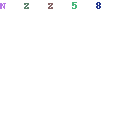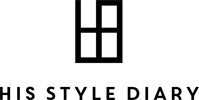I must confess I know little about Taiwan personally. Having never travelled there, my image of the country is informed by the amusing variety shows and travelogues that display bustling cities and picturesque countrysides, frequent news about their bitter political rivalry with China, and secondhand contact with their famed night market street food – versions of which I get in Singapore or L.A. are, as my better-travelled friends insist, sorry counterfeits.
Which is why I was so intrigued when in late September I received a media kit from ACROSPHERE, a fledgling menswear brand based in Taipei. Ensembles from their Fall/Winter 2015 collection were pictured against striking, almost 3D extraterrestrial scenes.
The skill of the model left me wanting, but otherwise the campaign was flawlessly done. One featured the platinum-blonde model rappelling off an asteroid’s surface, clad in a futuristic silver-gray foil zip-up jacket and sporty knee-length shorts.
What stood out most to me – apart from the designer’s savviness to the demands of the market, namely sportswear, and futurism – was the stark absence of anything “Taiwanese”.
With Asia’s fashion weeks drawing closer at that time, it was hard not to view the designs through the lens of cultural identity. Was the effacement of any ‘local identity’ a deliberate business decision in favour of international marketability, or was it simply an organic design choice?
“I don’t think about design in terms of East and West; ACROSPHERE is just my style,” says Chasel Yen, the head designer at ACROSPHERE. He graduated with a fashion design degree from Shih Chien University in Taipei, worked for a couple of brands, and finally decided to start his own label.
In fact, ACROSPHERE is only slightly more than a year old, and is run solely by Chasel and his twin sister, Oliver. She adds, “In the modern world, people follow Western norms of dress. What people consider ‘Oriental’ or ‘Eastern’ are traditional, cultural costumes, things we don’t wear normally in a modern setting.”
And so she hits the nail on the head: why seek out Asian elements from an Asian designer, when most urban Asians wear Western style clothing day to day? When we expect Asian designers to display Oriental flair, is that not ethnocentric?
But such musings are the job of a writer. Since its inception in September 2014, the duo behind ACROSPHERE has been working hard. They’ve introduced two seasonal collections, been featured on Apple Daily newspaper, and set up shop online and via select boutiques – reaching local buyers, and those in Germany and the United States.
It’s not hard to see why the label has already gotten some traction. Faithful to “futuristic athleisure”, the apparel could very well be the standard wear of a post-Earth civilization that has to contend with rough, inhospitable terrains. Like it was at the end of Christopher Nolan’s Interstellar, which happens to be Chasel’s favourite sci-fi film.
Galactic prints, mesh and reflective material, and sharp outlines come together with useful fabrics that promise thermal protection, nighttime visibility, moisture-wicking ventilation: a form-function marriage that is at the center of ACROSPHERE’s design philosophy.
Over a roughly hour-long conversation over Skype, I spoke to Chasel and Oliver about the inner workings of a start-up fashion label, the future of menswear, as well as their opinions regarding the menswear scene in Taiwan and beyond. And, of course, their take on what personal style truly is.
HIS STYLE DIARY: Why “futuristic athleisure”?
CHASEL: Athleisure is a current trend, and we added the futuristic part to differentiate ourselves. I like futurism because it gives me a lot of liberty to create different designs. I like that freedom.
HSD: So, was it the market that made you decide to get into activewear?
C: Yes, partly. When I was deciding on a style for ACROSPHERE activewear was in. But also, I like designing activewear. It has specific demands in terms of function, and I like the challenge.
HSD: What makes your designs “futuristic”?
C: In our FW15 collection, for example, we used reflective strips, a lot of silver, as well as iridescent fabrics. Our patterns are riffs on the space/time continuum, and they symbolize the future.
HSD: Your designs are predominantly black. Is the future a dark place for you?
C: The future is a mystery, and to me, black represents that. It represents the possibilities ahead. Black’s also a good background for fabric transitions, patterns, and other details to stand out.
HSD: Besides being stylish, your designs are also very functional. Do you think the fashion industry should head more towards this direction in the future?
C: Designers make clothing both for wearing and as installation art. I believe each brand has that decision to make for themselves. Clothes don’t have to be fashion-forward and practical at the same time, all the time. I think the culture now favors diversity, and there’s a market for clothing that’s made for purely artistic purposes. Diversified development, I think, is the best way ahead.
HSD: And what about ACROSPHERE? Which direction will you be taking?
C: Right now we’re focussed on combining beauty and functionality; that’s our first priority. But perhaps in the future, for a collaboration or a runway presentation, we may consider doing a collection that’s purely artistic expression.
HSD: What’s the hardest part of running a fashion label? Is it tough designing full collections twice a year?
C: Not really. What is hard is having no hiccups along the production process, like coordination issues with the factories. Design is actually not problematic at all.
HSD: Androgyny was a big theme in the fashion weeks in the West. Is that the future of menswear?
C: I think, in practical terms, that sportswear will still be the leading trend. Sustainable fashion and wearable technology are next.
HSD: What kind of technology?
OLIVER: Maybe combining mobile phone technology with apparel.
C: I actually have some concrete ideas, but I don’t really want to tell.
HSD: Why?
C: Because it may be attainable. So I’m keeping it a secret. [laughing]
HSD: Will womenswear be part of your portfolio in the future?
C: I would like to, eventually. I chose menswear at the beginning because I had more ideas about menswear. Also, as a man, I understand the masculine body better, and so it’s a little easier to start there.
HSD: So, do you have an ideal man in mind when designing? What would ACROSPHERE be like, if it were a man?
C: If ACROSPHERE was a man, he would be principled, have a mind of his own, and doesn’t passively follow the flow. He pays attention to his health, exercises, and likes a challenge. He has his life in order, and you can tell his confidence by his appearance.
HSD: And is there a big difference between you and that ideal?
C: Well…[chuckling] You can say he’s the man I would like to become. And there’s indeed a gap.
HSD: Is your idea of a stylish man similar too?
C: To me, a stylish man stands out just by standing there. His clothes are elegant and simple. Like, he can be wearing a simple black t-shirt, but that t-shirt just looks different from others because of some unique design elements.
HSD: What is personal style to you?
C: Personal style is something unique, irreplaceable. It should communicate your character, your beliefs. In fact, I wish to see people of different personal styles do their own thing with ACROSPHERE’s pieces. Different people will match our items to different effect, and I love to be surprised, have my eyes be opened.
HSD: So you’d rather people not buy full ACROSPHERE ensembles?
C: [chuckling] Sure, they can wear full-on ACROSPHERE! But people prefer to match items according to their own style, and I look forward to seeing that. Some customers have done so and taken photos for me, and I thought they were great.
HSD: Have Taiwanese men become more attuned to fashion? Are they dressing better?
C: In the past those who paid attention to the way they dressed were few and far between. Fewer than other Asian countries, perhaps. It’s not that we’re awesome now, but there are more well-dressed men around.
HSD: Well-dressed meaning?
C: Meaning someone who works on his appearance, and it shows. It may not be a style you like, but you know he put in effort to look good.
HSD: What’s the most frequently seen menswear style on the streets of Taipei?
C: “Streetwear”. It tends to be simple, straightforward. Not really New York or Tokyo, it looks… Taiwanese.
HSD: Ah, so a Taiwanese style has emerged?
C: You can say so. It’s hard to define because styles and cultures mix and blend. But you can still see shadows of the original culture, silhouettes that make it a local style.
HSD: What would you be wearing if we bumped into each other on the street?
C: I like black. It’s simple, easy to match. Actually… [chuckling] I wear a lot of ACROSPHERE. I’m either in black, or ACROSPHERE.
HSD: So your indispensable wardrobe item is…
C: Black t-shirts. It’s just so versatile. I also wear a lot of drop-crotch shorts. In black.
HSD: Do you have some favourite designers?
C: Alexander Wang. There’s a theme here. His designs are simple, hit the right spots, distinct. He’s great at that. I like Yohji Yamamoto too, especially his Y3 series. Again, the lines are straightforward, confident. He also uses black to show off design details.
HSD: Asian designers have made it abroad, Yamamoto being an example. As an Asian designer yourself, are you vexed by the lack of a legitimate fashion capital in Asia at the level of say, Paris, or even New York?
C: Certainly there’s a frustration. But I feel this represents room for us to improve, to progress. I do hope there will be a place in Asia where a mainstream fashion week is held and respected.
HSD: Where do you think it will be?
C: Most likely China, or Japan.
HSD: Any plans to enter those markets?
C: Not yet, but we’d like to go into China.
HSD: [in surprise] Really?
C: It’s nearby, and communication won’t be a problem. And of course, there’s potentially a huge market.
HSD: Last question: what will men be wearing ten years from now?
C: Ten years is too long to accurately predict. History tells us fashion recycles itself. People now see things that were fashionable years ago becoming fashionable again!
//
You can see more of, and purchase, ACROSPHERE’s apparel on their official website, www.acrosphere.co. This interview was conducted in Mandarin and translated to English by the writer.

